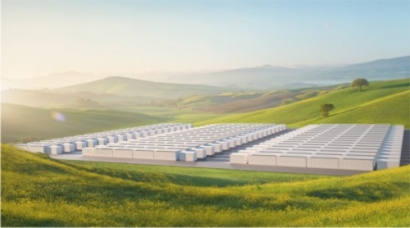
According to Tesla, Megapack reduces the complexity of large-scale battery storage and provides an easy installation and connection process as each Megapack comes from the factory pre-assembled and pre-tested in one enclosure from Tesla’s Gigafactory—including battery modules, bi-directional inverters, a thermal management system, an AC main breaker and controls. No assembly is required, all you need to do is connect Megapack’s AC output to your site wiring.
Using Megapack, Tesla can deploy an emissions-free 250 MW, 1 GWh power plant in less than three months on a three-acre footprint – four times faster than a traditional fossil fuel power plant of that size. Megapack can also be DC-connected directly to solar.
For utility-size installations like the upcoming Moss Landing project in California with PG&E, Megapack will act as a sustainable alternative to natural gas “peaker” power plants. Megapack can use stored excess solar or wind energy to support the grid’s peak loads.
Tesla developed its own software in-house to monitor, control and monetize Megapack installations. All Megapacks connect to Powerhub, an advanced monitoring and control platform for large-scale utility projects and microgrids, and can also integrate with Autobidder, Tesla’s machine-learning platform for automated energy trading. Tesla customers have already used Autobidder to dispatch more than 100 GWh of energy in global electricity markets. And, just as Tesla vehicles benefit from continued software updates over time, Megapack continues to improve through a combination of over-the-air and server-based software updates.

